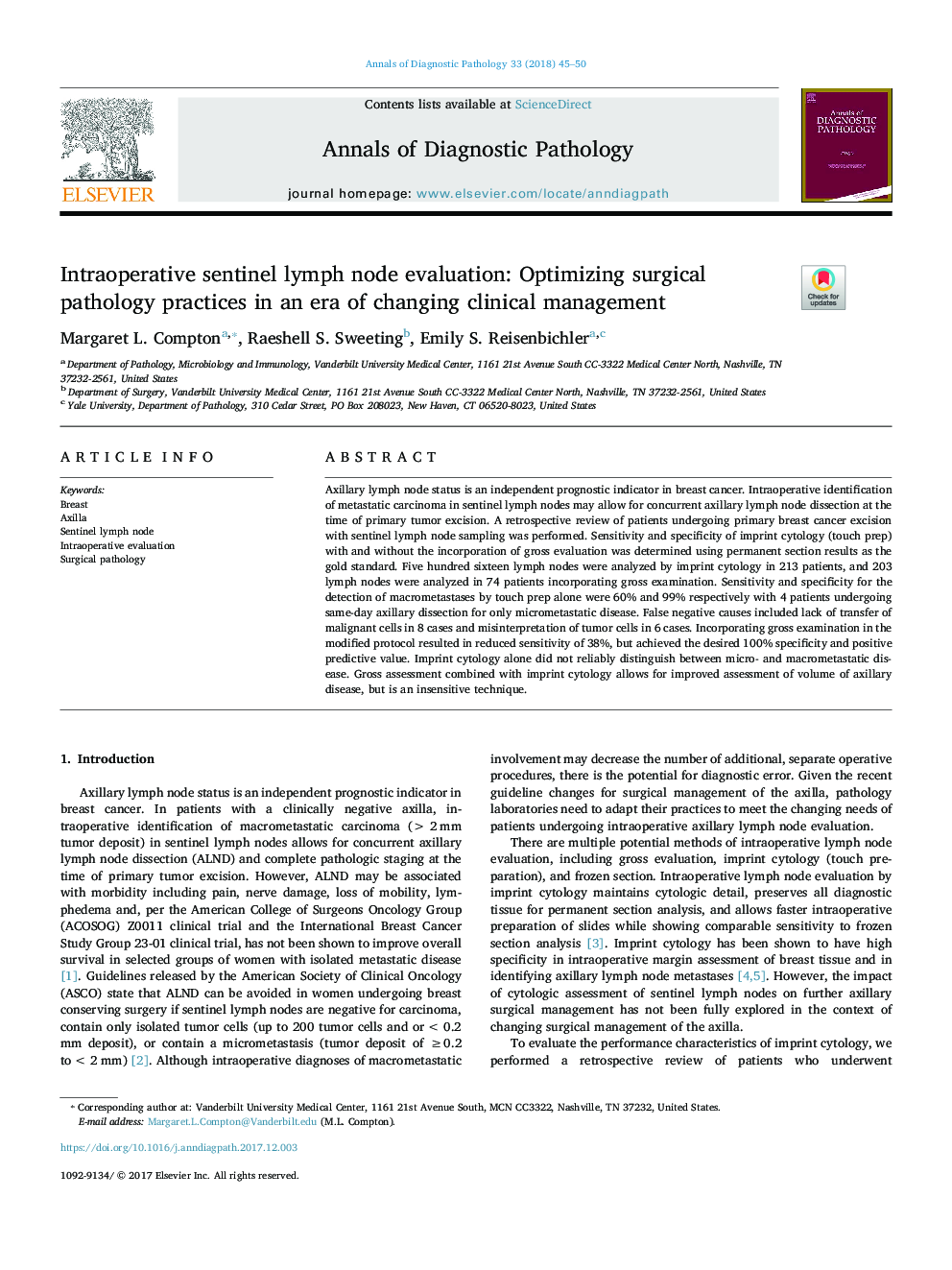| Article ID | Journal | Published Year | Pages | File Type |
|---|---|---|---|---|
| 8807207 | Annals of Diagnostic Pathology | 2018 | 6 Pages |
Abstract
Axillary lymph node status is an independent prognostic indicator in breast cancer. Intraoperative identification of metastatic carcinoma in sentinel lymph nodes may allow for concurrent axillary lymph node dissection at the time of primary tumor excision. A retrospective review of patients undergoing primary breast cancer excision with sentinel lymph node sampling was performed. Sensitivity and specificity of imprint cytology (touch prep) with and without the incorporation of gross evaluation was determined using permanent section results as the gold standard. Five hundred sixteen lymph nodes were analyzed by imprint cytology in 213 patients, and 203 lymph nodes were analyzed in 74 patients incorporating gross examination. Sensitivity and specificity for the detection of macrometastases by touch prep alone were 60% and 99% respectively with 4 patients undergoing same-day axillary dissection for only micrometastatic disease. False negative causes included lack of transfer of malignant cells in 8 cases and misinterpretation of tumor cells in 6 cases. Incorporating gross examination in the modified protocol resulted in reduced sensitivity of 38%, but achieved the desired 100% specificity and positive predictive value. Imprint cytology alone did not reliably distinguish between micro- and macrometastatic disease. Gross assessment combined with imprint cytology allows for improved assessment of volume of axillary disease, but is an insensitive technique.
Related Topics
Health Sciences
Medicine and Dentistry
Pathology and Medical Technology
Authors
Margaret L. Compton, Raeshell S. Sweeting, Emily S. Reisenbichler,
